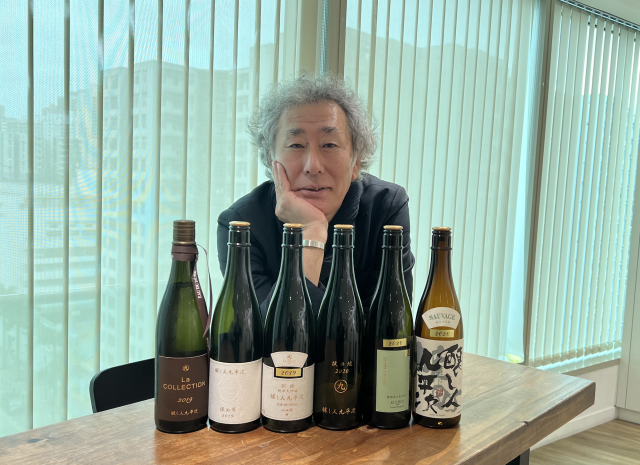Kuno Kuheiji describes the art of sake making
By Alice LiangSake holds a revered place as Japan’s traditional rice wine. Yet, there is a brewing revolution taking place that goes beyond tradition and pushes the boundaries of excellence. Meet Kuheiji, director of Kamoshibito Kuheiji, a sake brewery in Nagoya, Japan, that has taken the art of sake making to new heights by adopting practices akin to winemaking.

While a lot sake brewers emphasise the rice wine brewing techniques such as koji and yeast management, Kuheiji puts a lot of his attention on the rice. By growing their own rice since 2010, they have embarked on a path that mirrors the dedication and precision of winemakers tending to the grapes.
At Kuheiji, the journey towards exceptional sake begins in the rice fields. Kuheiji said, “while the industry norm is to purchase rice, we decided to grow our own and take control of the entire process. We recognise the impact of weather and climate on rice harvest, we meticulously record the weather patterns each year, much like how winemakers track vintages.”
The choice of sake rice is crucial in determining the flavour, texture, and overall character of the final product and the climate and geographical factors in each region can affect the rice’s growth and characteristics, similar to the concept of “terroir” in wine. Typhoons, for instance, can have a significant effect on the rice crop, with the influences of the weather becoming instilled in each grain, which its growth is highly sensitive to sunlight and water amount. A prime example is Yamada Nishiki rice, which can only be cultivated in Hyogo Prefecture and bloom in September, while this grain can’t be planted in due to shorter sunlight hours. Meanwhile, a cool year with less sunlight can result in smaller rice grains, and that is comparable to the challenges faced by winemakers during a challenging vintage.
Kuheiji commented, “the resulting sake is “vintage-specific” as it carries the essence of its birth year, reflecting the conditions and challenges faced during cultivation.”
Speaking on the parallels between grape and rice, Kuheiji believes the philosophies of minimal intervention and letting the nature speak remain the guiding principles for both wine and sake production.
Partner Content
Kuheiji is aspired to change people’s perception of sake since a young age. Having initially associated sake with excessive drinking, he sought to elevate its status and reshape the way it is consumed. Noticing that the traditional small cup fails to fully express the complex aromas of sake, he embraced new challenges and innovations. The turning point came with the decision to grow their own rice, leading to the establishment of a kura (sake brewery) in the rice fields.
By immersing themselves in the process and studying sake rice intensively, Kuheiji demonstrated their commitment to professionalism and a passion for pushing the boundaries of excellence.
Kuheiji realised the importance of bridging the gap between sake and wine appreciation in 2006, when he was inquired by some French sommeliers on his products. To gear up himself, he even went to Burgundy to learn winemaking. By elevating the attention on rice to the same level as wine grapes, they aim to foster international recognition and promote sake globally.
The goal is to highlight sake’s compatibility with various cuisines, extending beyond traditional Japanese fare. Kuheiji said,” I hope to capture the attention of high-end restaurants and educate consumers, ultimately establishing sake as a staple in the international culinary landscape.”
Similar to wine, sake can undergo aging to enhance its flavors and complexities. Kuheiji adopts a meticulous approach to aging, opting to store their sake in bottles rather than tanks. This method minimises oxidation and ensures the preservation of the sake’s delicate characteristics. The aging process imparts elegance and richness to the sake, transforming it from a stiff and young brew into a more refined and mature creation. With their oldest reserve dating back to 2014, Kuheiji showcases the benefits of patience and the rewards of aging.
Kamoshibito Kuheiji is exclusively distributed by ASC Fine Wines in Hong Kong and China.
Related news
Soto Sake joins forces with Mangrove Global




